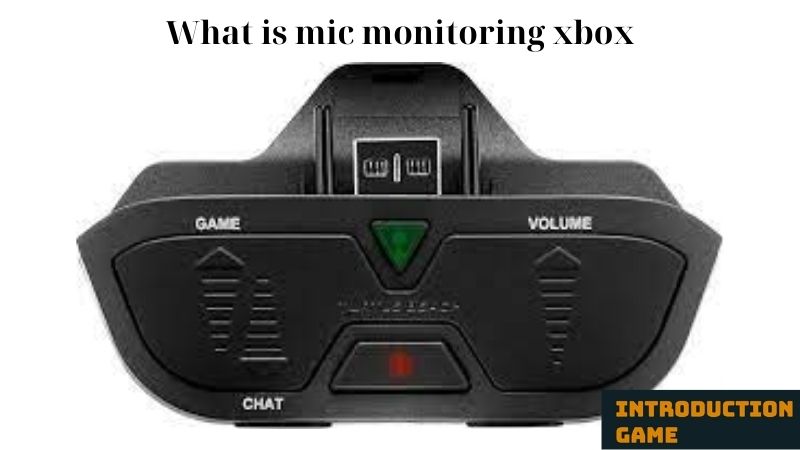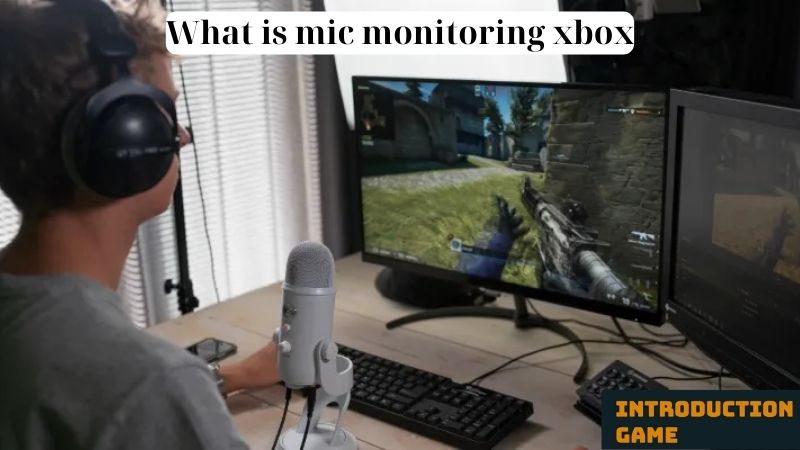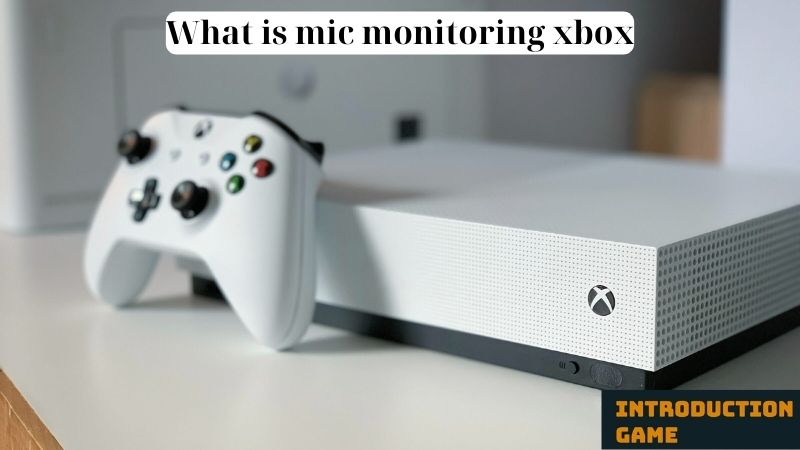
What is Mic Monitoring Xbox? Mic monitoring is an audio feature that allows users to hear their own voice through their headset as they speak into the microphone. This feature is particularly important in gaming, where clear and effective communication can significantly enhance the multiplayer experience. For Xbox users, understanding and utilizing mic monitoring can lead to better coordination with teammates and an overall improved gaming experience. Introgame.net delves into what mic monitoring is, how it works on Xbox, its benefits, how to enable it, and best practices for optimal use.
What is Mic Monitoring Xbox?

Mic monitoring functions by feeding the audio input from the microphone back into the user’s headphones. This allows the speaker to hear their own voice in real-time. The primary purpose of mic monitoring is to provide users with immediate feedback on their voice levels and clarity. This can be especially useful in noisy environments or when using closed-back headsets that can make it difficult to hear oneself speak naturally.
In practical terms, mic monitoring helps users avoid speaking too loudly or too softly by giving them a sense of their own volume and tone. It also helps in identifying background noise that may be picked up by the microphone, allowing users to make necessary adjustments to their environment or speaking habits.
Mic Monitoring on Xbox

What is Mic Monitoring Xbox? The Xbox platform, including Xbox One and Xbox Series X/S, supports mic monitoring as part of its suite of audio features. This feature is integrated into the console’s settings, making it accessible and easy to adjust for users who want to enhance their gaming communication.
Mic monitoring on Xbox is designed to be user-friendly and compatible with most headsets that connect to the console. Unlike some other platforms where mic monitoring might require additional software or hardware, Xbox consoles offer built-in support, making it straightforward to use.
Benefits of Mic Monitoring
There are several key benefits to using mic monitoring, particularly in a gaming context. Enhanced communication is perhaps the most significant advantage. In multiplayer games, clear and effective communication is essential for coordinating strategies, alerting teammates to in-game developments, and fostering a sense of teamwork. Mic monitoring helps ensure that players’ voices are clear and at an appropriate volume, which can prevent misunderstandings and improve overall gameplay.
Mic monitoring also helps reduce yelling and volume issues. Without mic monitoring, players might unconsciously raise their voices because they can’t hear themselves properly, especially in loud gaming environments. By hearing their own voice through the headset, players can maintain a more consistent and moderate speaking volume, which can be more comfortable for both the speaker and their teammates.
Another benefit is the immediate feedback on mic quality and background noise. Players can quickly identify if their microphone is picking up unwanted sounds, such as background chatter, keyboard clicks, or ambient noise. This allows them to make adjustments on the fly, either by changing their position relative to the microphone, adjusting microphone sensitivity settings, or addressing the source of the noise.
How to Enable Mic Monitoring on Xbox?
Enabling mic monitoring on Xbox is a straightforward process. Here is a step-by-step guide:
- Access the Settings Menu: Turn on your Xbox console and press the Xbox button on your controller to open the guide. Navigate to the “Settings” menu.
- Select Devices & Streaming: Within the settings, go to the “Devices & Streaming” section.
- Go to Audio Devices: Choose “Headset” or “Audio Devices” depending on your specific console version.
- Adjust Mic Monitoring Levels: In the audio settings, you will find an option for mic monitoring. Use the slider to adjust the level of mic monitoring to your preference. Increasing the level will make your voice more audible through the headset, while decreasing it will lower the feedback.
- Test and Adjust: After setting your preferred level, test it in a game or party chat to ensure it’s at a comfortable and effective level.
Troubleshooting Common Issues
If you encounter issues with mic monitoring, here are some troubleshooting tips:
- Mic Not Detected: Ensure your headset is properly connected to the controller or console. Check for firmware updates for your headset or controller that might address connectivity issues.
- Feedback or Echo Problems: Feedback or echo can occur if the mic monitoring level is too high. Lower the mic monitoring volume and check your headset’s position to ensure it’s not too close to the speakers.
Adjusting Mic Monitoring Settings
Customizing mic monitoring settings can enhance your gaming experience. Finding the right balance is crucial. If the monitoring level is too high, it can be distracting, while too low a level might defeat the purpose of the feature. Start with a moderate setting and adjust based on your comfort and the noise level of your environment.
To optimize mic monitoring, consider using a noise-cancelling headset. This type of headset can help reduce ambient noise and improve the clarity of both incoming and outgoing audio. Additionally, maintaining a consistent distance from the microphone can help ensure steady audio quality.
Comparison with Other Audio Features

Mic monitoring is often compared to other audio features such as sidetone and noise suppression. While similar to mic monitoring, sidetone typically refers to a feature found in telephony and some communication systems where the user hears their voice through the earpiece. Both features aim to provide real-time feedback, but mic monitoring is specifically designed for headsets used in gaming and other interactive applications.
Mic monitoring also differs from noise suppression, which is designed to filter out background noise from the audio signal. While mic monitoring provides feedback on the entire audio input, noise suppression focuses on reducing unwanted sounds. These features can complement each other by providing clear audio feedback while minimizing distractions.
Voice chat settings on Xbox also offer various options for customizing the audio experience. Players can adjust chat mixer settings to balance game and chat audio, ensuring that communication remains clear without overpowering game sounds.
Best Practices for Using Mic Monitoring
Choosing the right headset is essential for an optimal mic monitoring experience. Look for headsets that are specifically designed for Xbox and feature good microphone quality, comfortable fit, and durable build. Brands such as Turtle Beach, Astro, and SteelSeries offer headsets with excellent mic monitoring capabilities.
Maintaining good audio hygiene is also important. Regularly check your microphone quality to ensure it’s free from distortion or damage. Clean your headset and microphone periodically to avoid buildup of dirt or debris that can affect performance.
Avoid common audio pitfalls by gaming in a relatively quiet environment. Background noise can interfere with mic monitoring and make communication difficult. If you’re gaming in a noisy area, consider using noise-cancelling headphones to help mitigate the impact of ambient sounds.
Conclusion
What is Mic Monitoring Xbox? Mic monitoring is a valuable feature for Xbox users, enhancing communication and improving the overall gaming experience. By allowing players to hear their own voice through their headset, it helps maintain appropriate speaking volumes, provides feedback on mic quality, and ensures clear and effective communication. Understanding how to enable and optimize mic monitoring, as well as choosing the right headset, can significantly enhance your multiplayer gaming sessions. By following best practices and troubleshooting tips, you can make the most of this feature and enjoy a more immersive and enjoyable gaming experience.